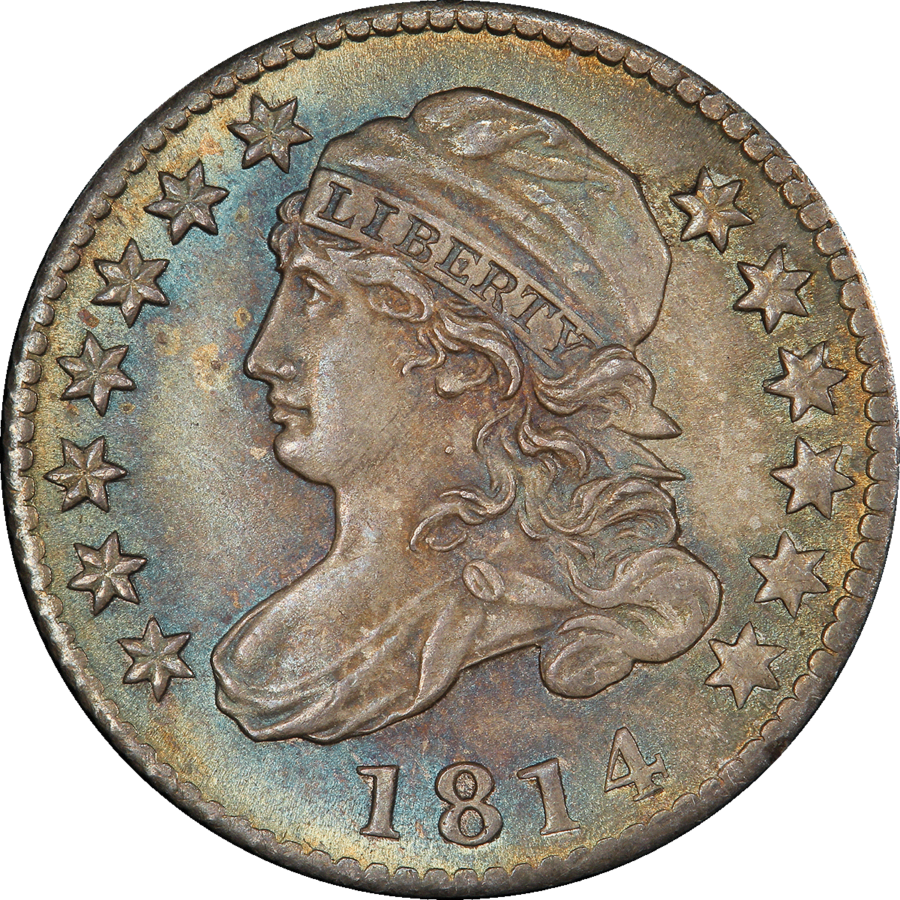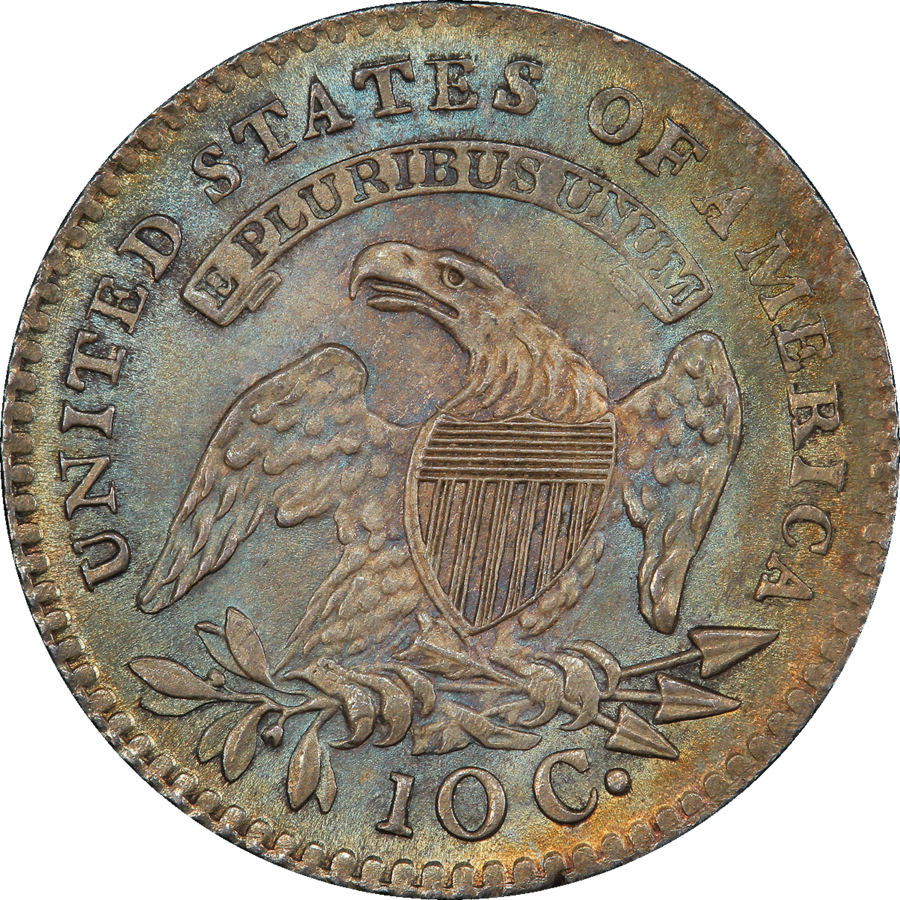Kaselitz's Gem 1814 Capped Bust Dime
John Reich 2 : Large Date obverse, with right edge of second 1 below the left edge of the lowest curl. Reverse with period after 10C. Rarity 3.
This is the finest known 1814 Dime of the JR.2 die pair, likely finest known of the ‘Large Date’ group, and the second finest 1814 Dime including all varieties behind only the ex Mills – Wilson – Pogue 1814 JR.1 Small Date PCGS MS66+ #31914894 last sold in February 2016 at $94,000.
Doug Kaselitz’s passion was his type set, and the small group of incredible Early American Silver coins which anchored this set solidified it as one of the more important offerings of our time. Doug’s silver highlights included the Eliasberg 1803 Draped Bust H10c MS65+, an 1805 Draped Bust 10c MS66+, the Eliasberg 1829 Capped Bust 10c PR66, an 1828 Capped Bust 25c MS66+, the Atwater-Hawn 1806/5 Draped Bust 50c MS66, Pryor’s 1807 Capped Bust 50c Small Stars MS65+, a 1797 Draped Bust $1 10×6 Stars MS64 from Norman Schultz, and this Gem 1814 Capped Bust 10c.
All known 1814 Capped Bust Dimes were struck from one of five different die pairs using three new obverses and four new reverses. Traditionally, these have been grouped into three ‘varieties’, with the ‘Small Date’ including only JR.1, the ‘Large Date’ group including JR.2, JR, 3, and JR.4, and lastly the JR.5 ‘STATESOFAMERICA’ which shares a ‘Large Date’ obverse with JR.4 paired with a reverse with no space between S-O and F-A. Coins from the JR.3 and JR.4 die pairs are the most available for 1814, especially in upper Mint State, which makes the ‘Large Date’ group the most available variety for the date. However, coins from the JR.2 ‘Large Date, With Period’ dies are notably scarcer than their JR.3 and JR.4 ‘Large Date, No Period’ cousins with few survivors near the Gem level.
Regardless of date or die pair, this is an exceptional example of John Reich’s Capped Bust design. The strike is typical for an early Capped Bust Dime, with blunt details in Liberty’s hair above her brow, and weak detail in the farthest right hair curls, the stars at right, the right end of the reverse banner at UNUM, and the reverse dentils at right all evidence of die faces that were not quite parallel. Soft, powdery toning is perfectly matched from the obverse to the reverse, with pastel greens and blues dominant, blending to subtle amber and violet tones near the centers. The surfaces appear to be fully original and undisturbed, with no abrasions of note. While 1814 as a date is one of the more plentiful years for early Mint State Capped Bust Dimes, this example is one of the very small number of truly Gem survivors of the ‘Open Collar’ subtype, and the clear Finest Known of one of the scarcer die marriages for the year.
PCGS #37113470
Provenance
Douglas C. Kaselitz (U.S. Type Collection); Stack’s Bowers “Douglas C. Kaselitz Collection”, July 2015, lot 5120 @ $58,750 as PCGS/CAC MS66 to Joseph O’Connor (OCNUMIS); ‘The Type Set’ by Oliver and Lish Jung.


